► BMW builds a hydrogen-powered X5
► iX5 fuel cell car is part of a pilot study
► BMW aims to have fuel cell production car by end of decade
Hydrogen fuel cell cars have a future! At least, according to BMW, they do.
So much so that this X5 isn’t like any other – it’s been modified to use a hydrogen fuel cell powertrain. It’s part of a pilot scheme the brand is undertaking to develop fuel cell technology and prove to the world that it’s committing to it as part of the powertrain mix of the future.
Why does BMW think hydrogen is a good idea?
Ah yes… the big question.
Because it still helps the brand’s decarbonising efforts. That’s the main reason, anyway, and BMW is more than willing to say that going carbon neutral requires more than just battery-electric cars on the market. ‘We shouldn’t just say “this is it” and just focus on that one thing,’ says Jurgen Guldner, BMW’s general program manager for hydrogen technology, in reference to BEVs. ‘We need to use the full spectrum of technologies to do the decarbonisation job.’
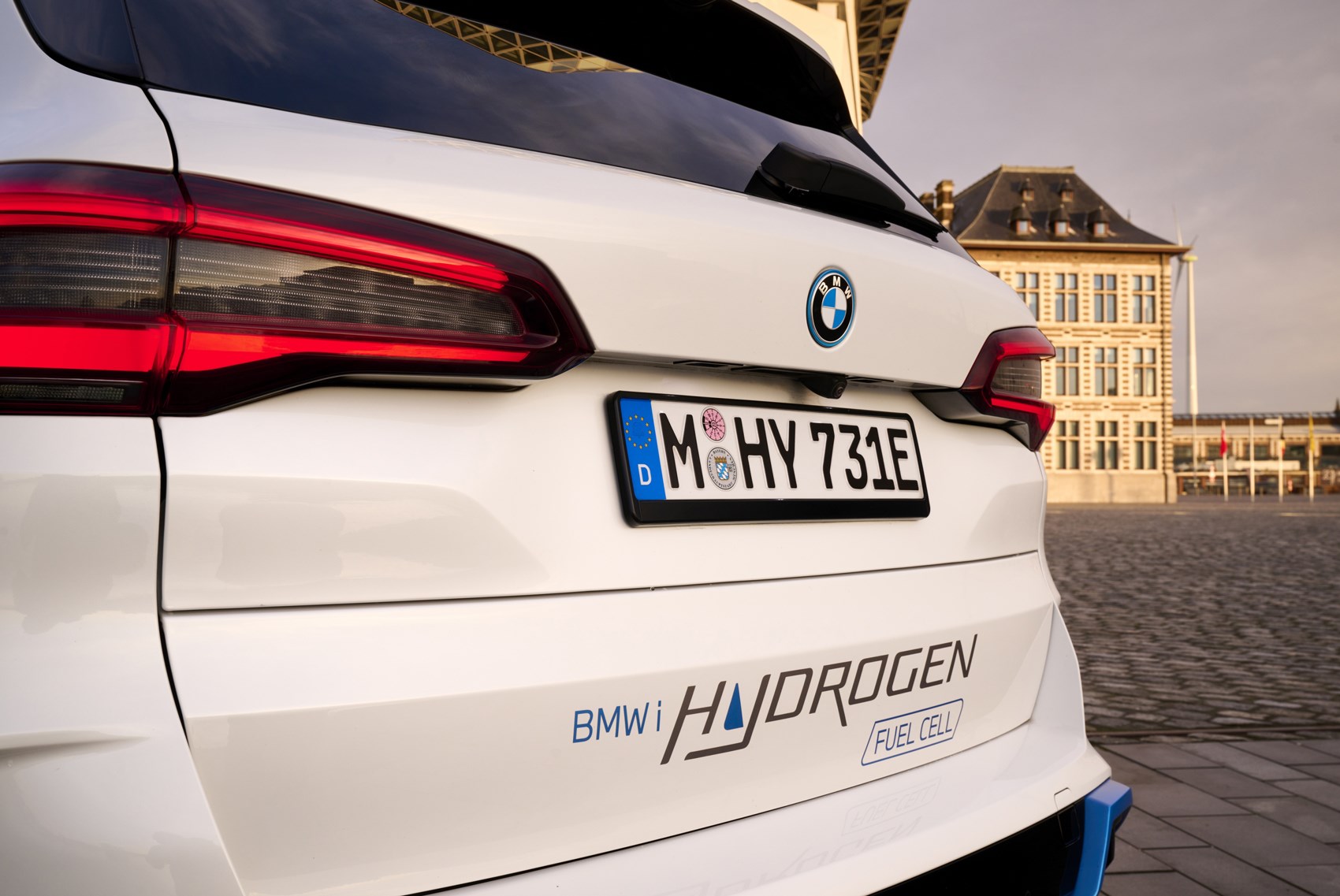
BMW knows BEVs have their place (it would help to think that way, given the brand is selling quite a few of them these days), but certain use cases suggest a hydrogen fuel cell car is the answer. If you’re a regular long-distance traveller, find it impossible with your current living conditions to have a home charger, live in cold climates or regularly tow heavy loads, BMW says a FCEV is a better option.
BMW also claims a FCEV needs 100kg less raw materials than a BEV does and 90 per cent less ‘critical raw materials’ are needed in a hydrogen fuel cell powertrain over a BEV battery.
The brand also points to studies and directives within Germany and the European Union that suggest that including FCEV cars in the powertrain mix will actually be cheaper overall than purely focusing on BEVs for passenger car use. Why? Because existing petrol stations can be modified to include H2 pumps and don’t require massive infrastructure upgrades like banks of new EV chargers would require.
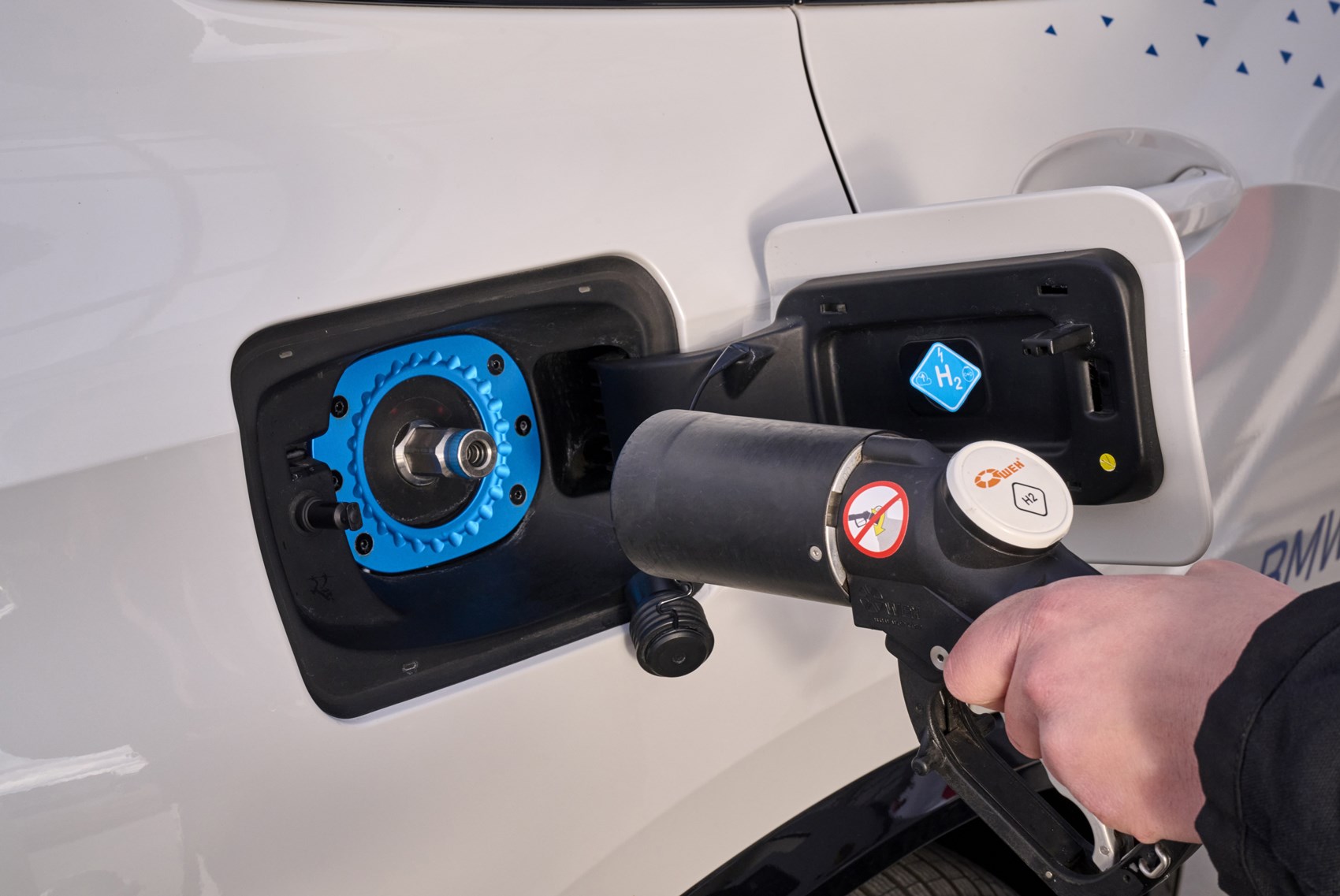
‘You would basically have to upgrade the whole grid in order to actually supply all of that energy, and the whole system needs to be designed for peak loads. The whole system needs to be upgraded and that cost goes up the more cars there are to charge,’ says Guldner. ‘With hydrogen filling stations, it’s the opposite. In the beginning, it’s very expensive as you need a basic network of stations to get the whole thing going. But then the cost curve is pretty linear as each station costs the same, but we expect that the price of stations will go down with economies of scale.’
But isn’t a big flaw that lack of infrastructure, though?
Yes – just like it was with EVs 20 years ago. Despite the process of refilling a hydrogen fuel cell car taking about as long as a petrol or diesel combustion engine car, BMW says there are just 12 operational hydrogen filling stations in the UK. The country with the largest number of stations in Europe is Germany with 105, while China has more than 300.
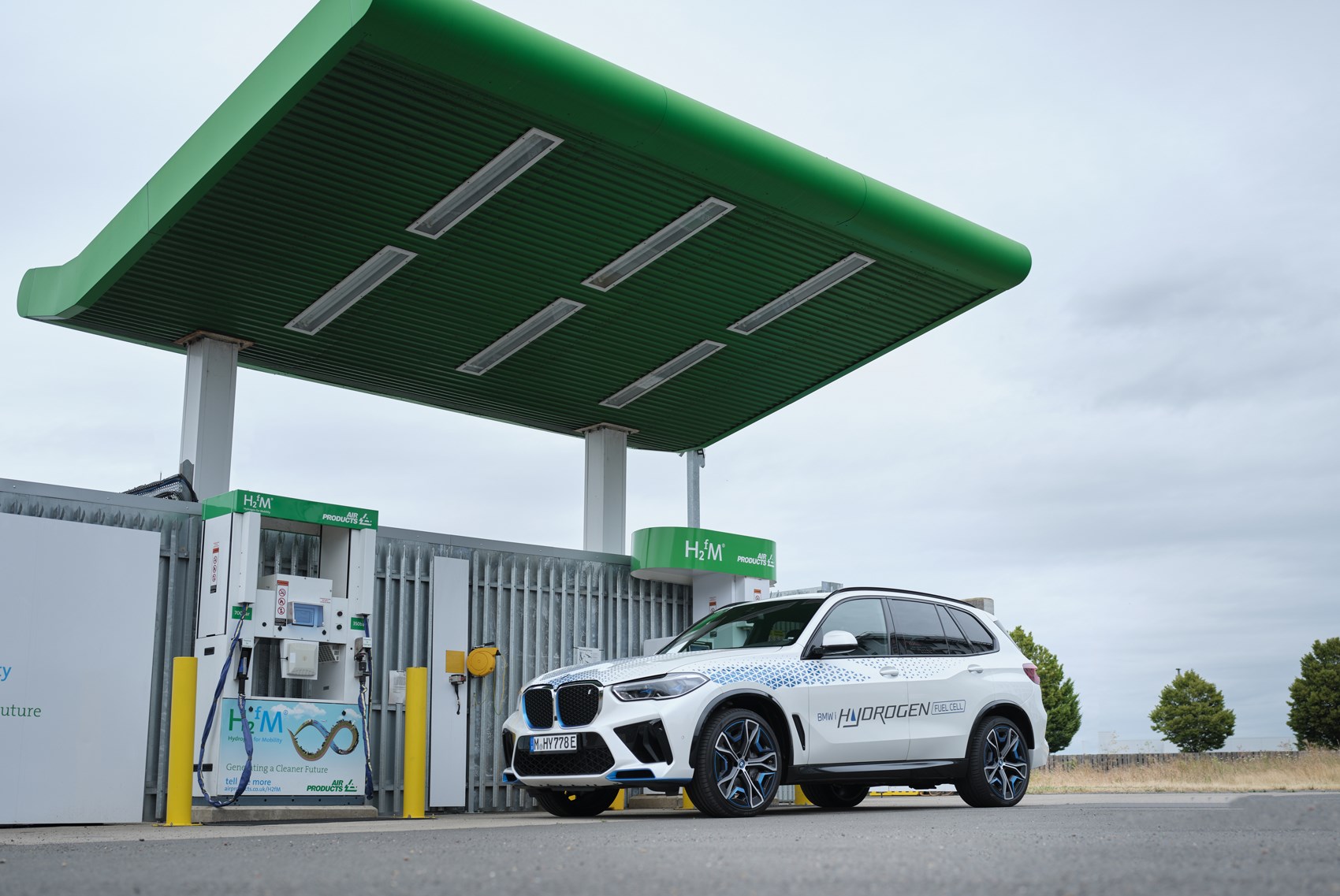
The European Union has kicked off a directive as part of its climate neutrality goals to build a hydrogen filling station every 200km ‘and at every urban node’ by 2030. While the UK has its own climate neutrality goals, it’s not quite so clear how a hydrogen filling station will develop. Air Products – a company selling gases for use in industry – has a filling station at Hatton Cross in the UK (where we filled up the iX5, pictured above) and intends to build more in the UK. Ditto a company called Element 2.
But, just like the development of electric cars and their respective infrastructure, there’s still some way to go.
How does BMW plan on rolling this out, then?
BMW aims to do so in a very similar way to its electrification strategy. Guldner points out that BMW Group’s investigations into battery-electric cars started around 2007 with the Mini E and BMW ActiveE pilot schemes, with the brand’s first electric production car (the i3) being launched around seven years later. BMW’s EV rollout – which is happening right now with cars like the iX3, i4, iX and i7 – is, according to Guldner, testament to how polished the development process and a rough timeline guide for a range of fuel cell cars.
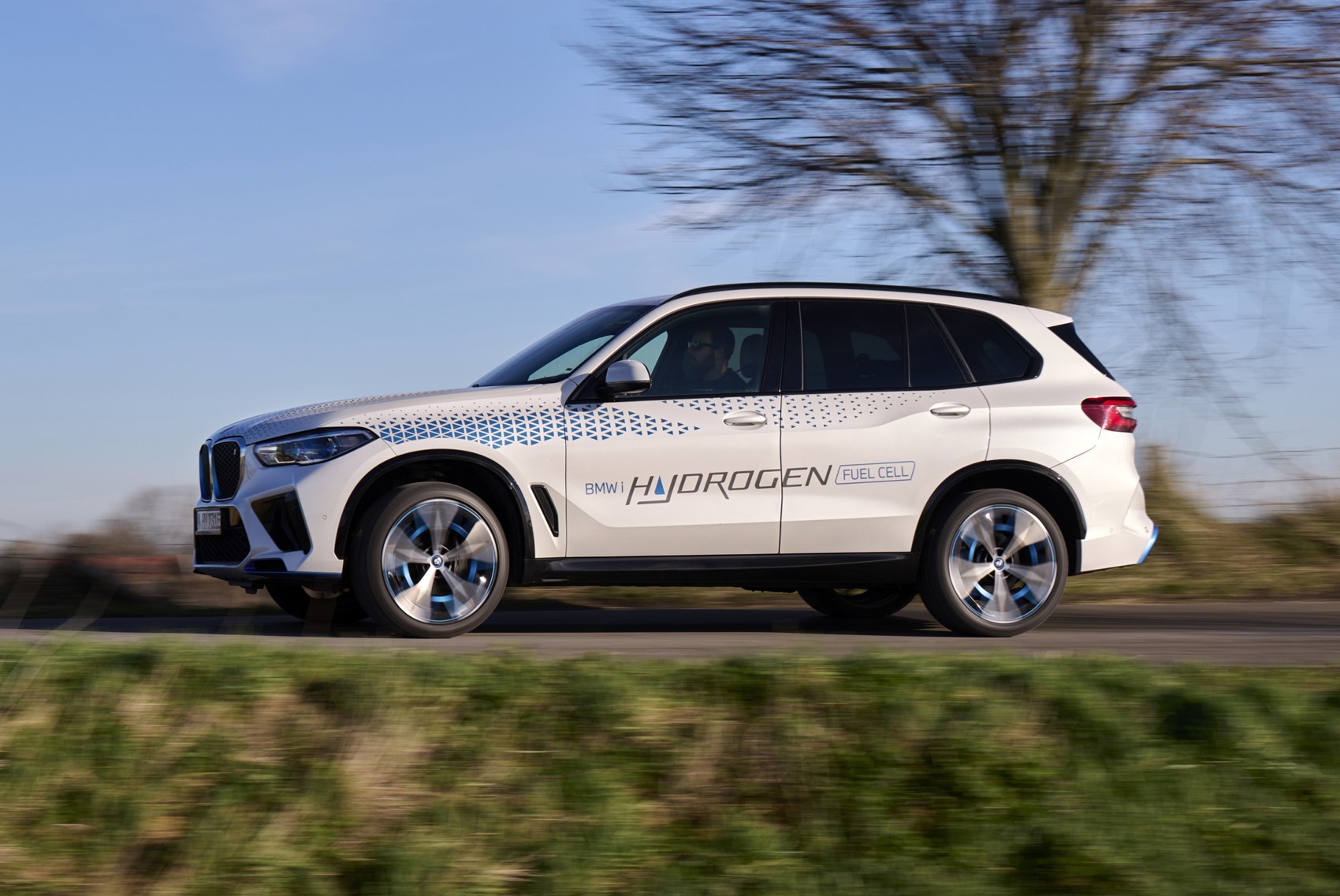
‘We’re at the pilot stage with this iX5, with a few dozen vehicles all around the world,’ says Guldner, ‘and this is a preparation for a possible market introduction or possible mass product later in this decade. We haven’t decided what model or the exact date yet, but we think the conditions will be right sometime within this decade. Which then would mean a possible rollout in the 30’s across more models.’
How does this hydrogen fuel cell car differ from a normal X5?
The entire powertrain fits under the bonnet, centre tunnel and under the boot floor of a regular X5. The fuel cell system itself is at the front, extracting energy from the hydrogen gas fuel reacting with oxygen in the air, with a large central hydrogen fuel tank running down the centre tunnel and another placed beneath the rear seats. A power battery is fitted beneath the boot floor, and the iX5 is driven by the same BMW eDrive motor used in the iX electric SUV.
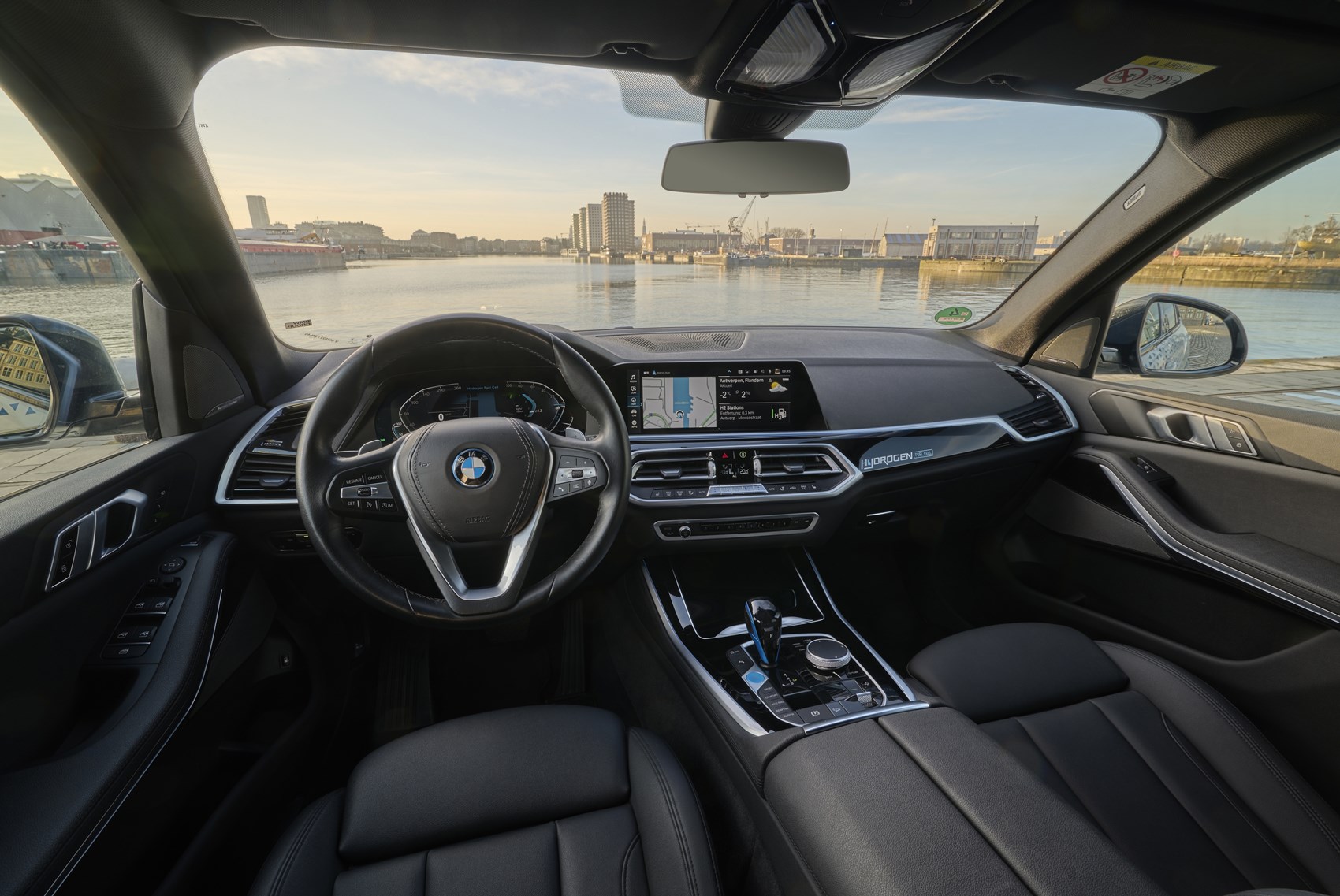
And it looks almost exactly like an X5 inside and out. Besides the decals of this pilot scheme car, BMW has trimmed the iX5 with various blue accets in the grille, bumper sets and wheels. Inside, it’s the same story, with a blue starter button and EV-like instruments akin ot the iX1 and iX3. BMW also says that the iX5 has the same boot volume (and weighs roughly the same) as a plug-in hybrid X5 45e.
How does the hydrogen fuel cell iX5 drive?
We’re inclined to apologies to you here, as it’s not quite as ground-breaking as you’d think from behind the wheel. Why? Well, generally, the iX5 just feels like an X5… but electric. If you run a plug-in hybrid X5 in eDrive mode, it’ll feel exactly the same.
But before you sigh and read something else, that’s not a bad thing by any stretch. It’s refined and quiet inside, almost calming. Motorway drives are smooth and cosseting, and bumps are soaked up well through the car’s air suspension. It still feels like an X5, with fluid yet direct steering and a planted feel on the road.
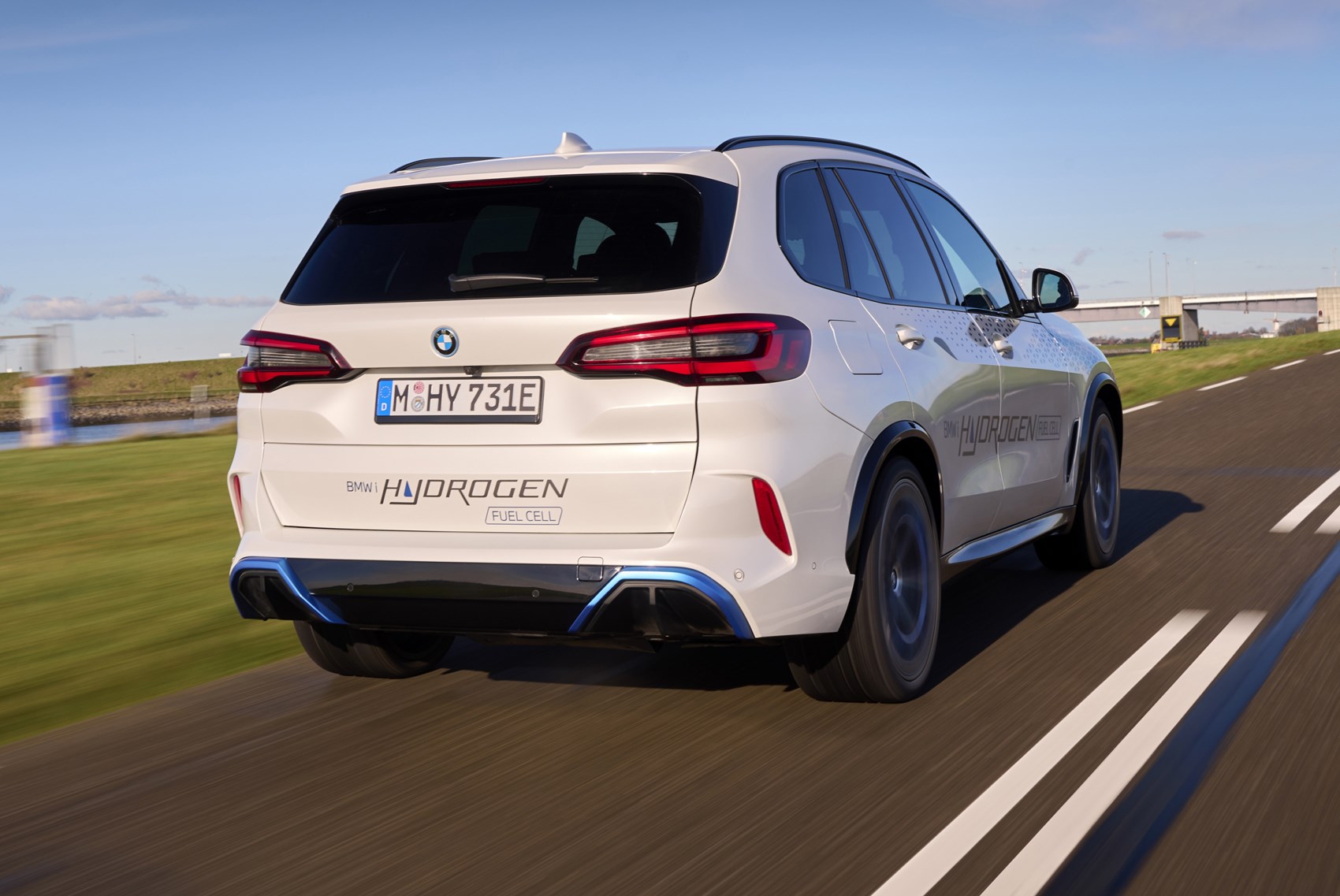
It doesn’t feel heavy (or, we suppose, any heavier than an X5 usually feels) or wayward with the alternative powertrain beneath, and that iX-derived e-motor provides plenty of punch. We did a traffic light sprint from a standstill and it felt EV fast.
BMW iX5 hydrogen fuel cell: verdict
A tricky one, this. Fundamentally, our time with the iX5 Hydrogen Fuel Cell proves that this alternative powertrain is a viable modification in a car that’s not strictly been designed to house it (unlike the Toyota Mirai or Hyundai NEXO). The car itself feels exactly how an electric X5 would drive, in a similar way to how an iX3 feels like an X3.
It’s an interesting first tangible step for BMW when it comes to fuel cell technology, and its attitudes to a rollout within the decade are grounded by the fact it’s done the same thing with BEVs. Not having much of a strategy beyond relying on government regulations to increase the number of hydrogen filling stations, however, seems like a missed opportunity to be a pioneer in this space.